40 years since the bombing of the Rainbow Warrior
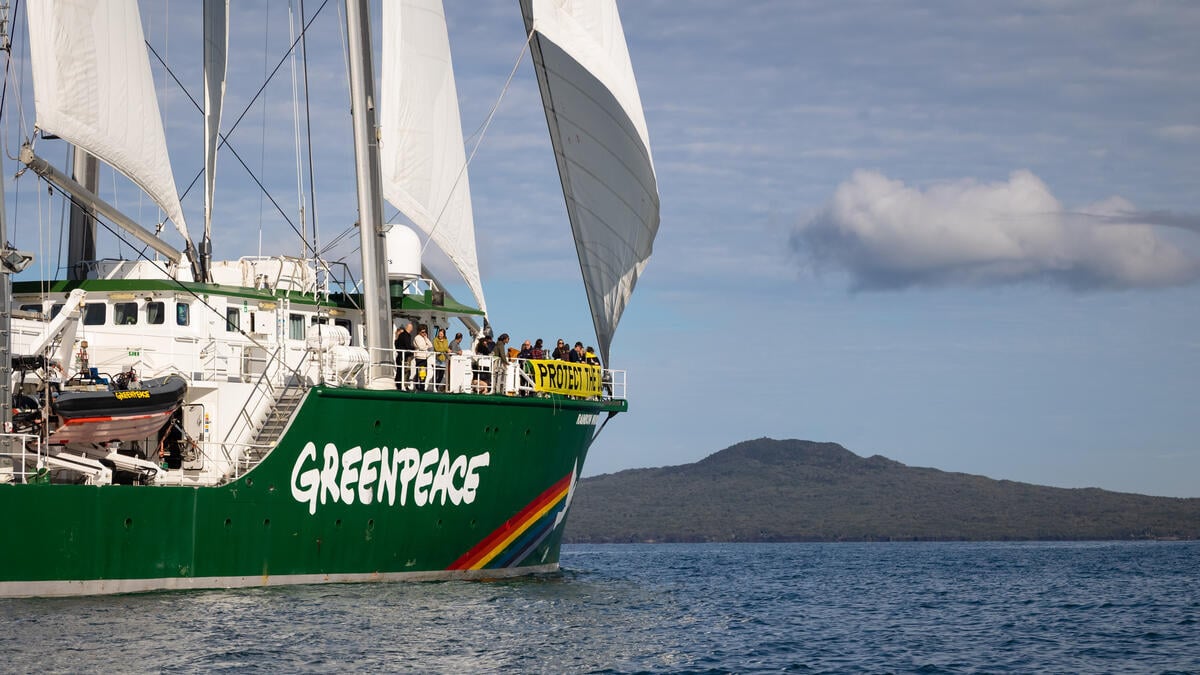
Four decades have passed since the night that two limpet mines tore through the hull of the Rainbow Warrior in Auckland Harbour.
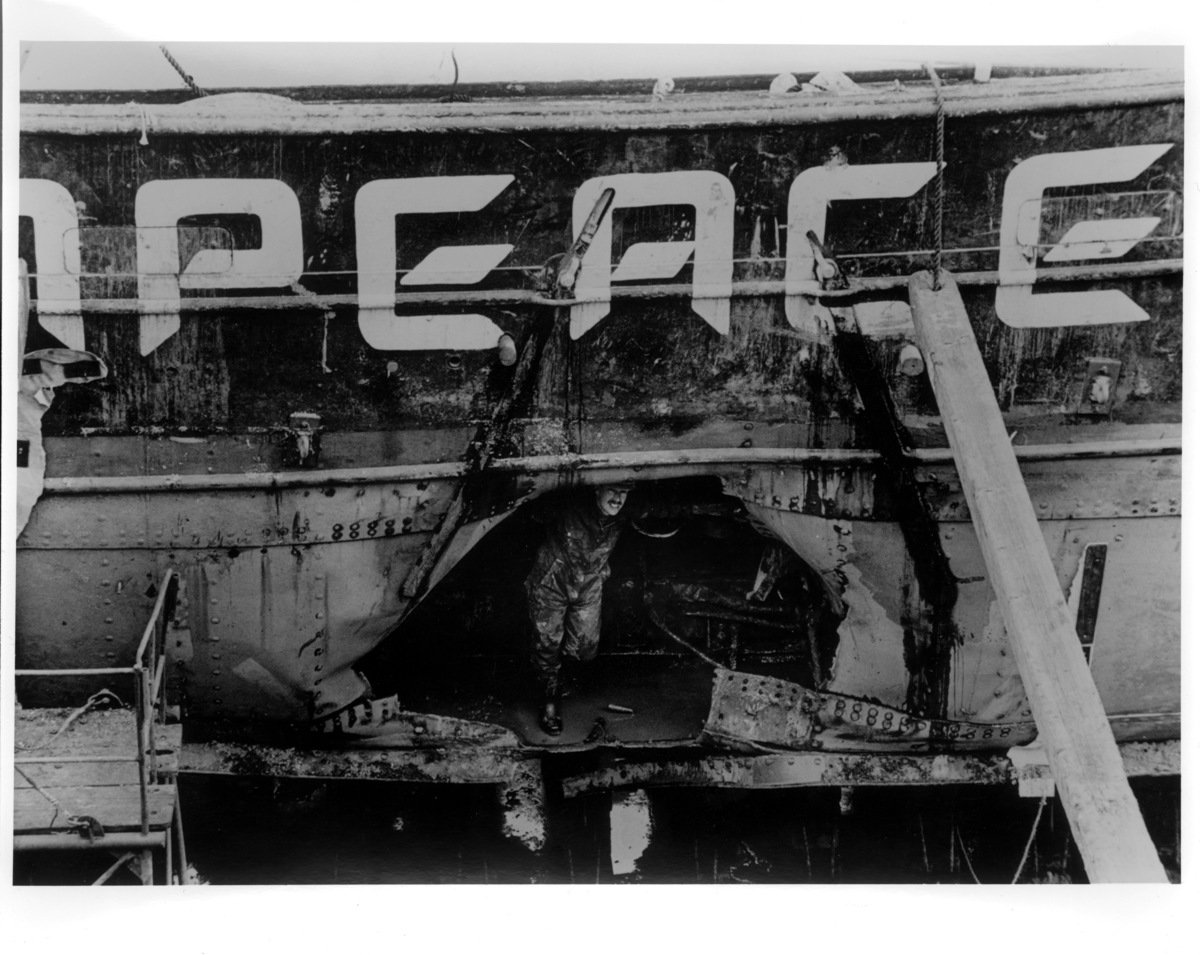
The ship had just returned from evacuating the radiation poisoned island of Rongelap, and was refuelling and conducting maintenance ahead of a planned protest against French nuclear weapons at Mururoa Atoll.
Earlier that night the ship's crew and campaigners had been celebrating the birthday of one of the campaigners, Steve Sawyer. But by midnight most of them were already asleep as two frogmen slipped into the water and planted their explosives.
The twin explosions scuttled the ship, Greenpeace photographer Fernando Pereira, a father and a man who was committed to bearing witness to the injustices of nuclear testing in the Pacific, was caught in the sudden rush of water and drowned.
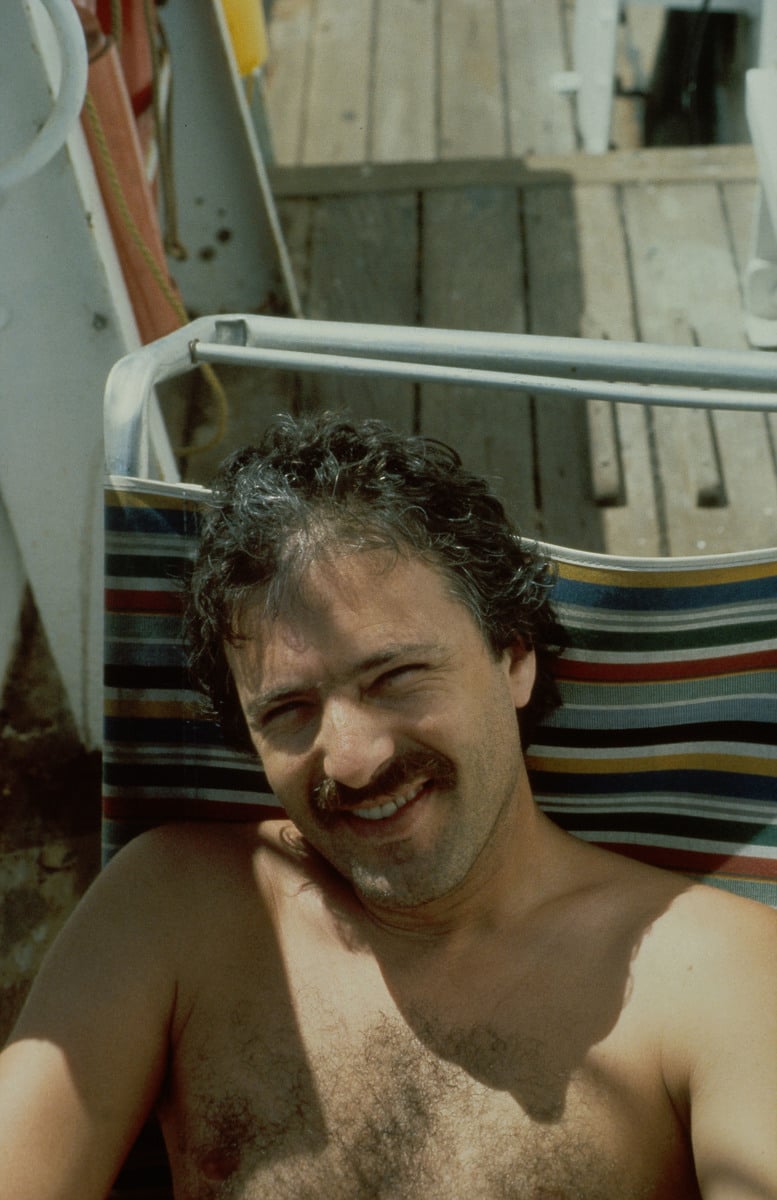
That night the French government wasn't just trying to sink a ship – it was attempting to sink a movement, to attack activism and to silence the voice of hope.
It failed.
In the months that followed, the world was outraged at the state-sponsored attack on peaceful protesters. The story of the bombing, as well as the nuclear tests and aftermath, became globally condemned. People around the world heard the story of the crew aboard the ship – and their belief that hope is not a passive state of mind, hope is a decision to act, it is the hammer that breaks the glass in times of emergency.
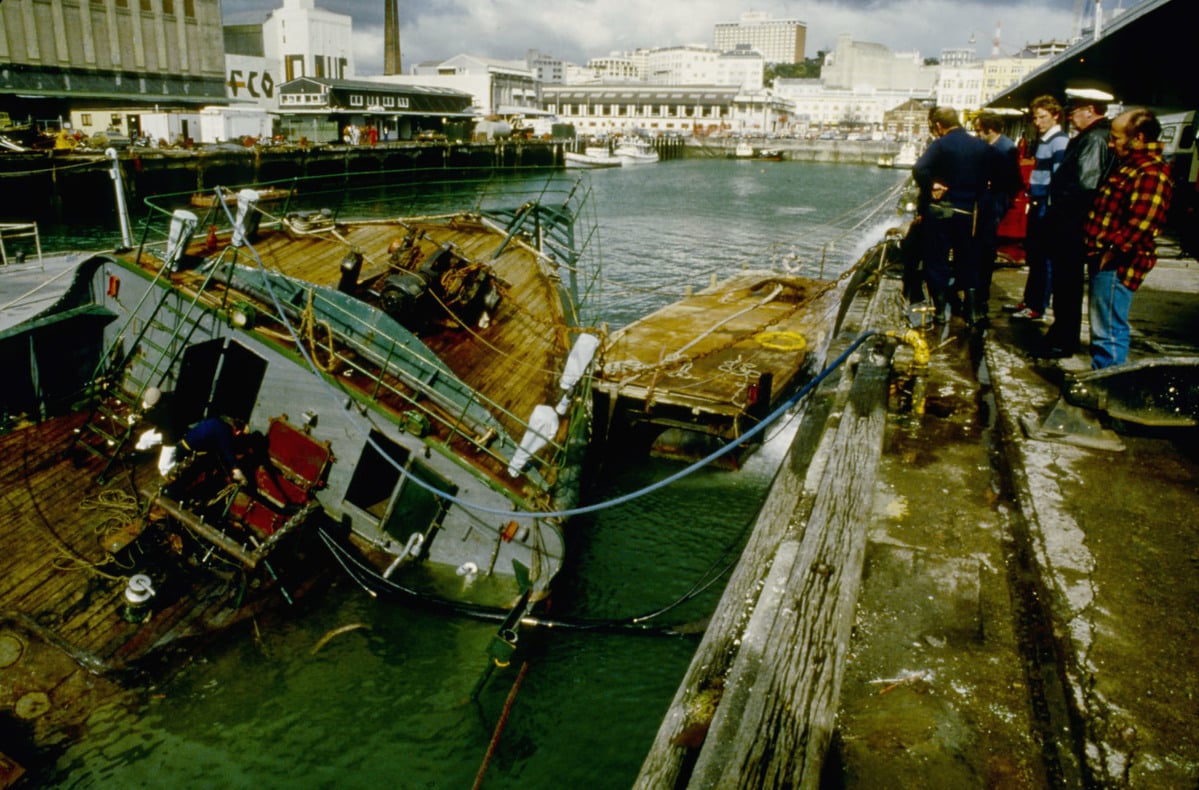
Greenpeace and the movement refused to back down and continued to campaign against nuclear testing until, in 1996, we won.
Today, as we mark the 40th anniversary of the attack, the attacks on activism, and the relevance of the voyage which brought the Rainbow Warrior to Auckland Harbour are still painfully relevant.
In the past few months Greenpeace has been on a tour of the Marshall Islands, witnessing the ongoing legacy of nuclear testing; generations of Marshallese people still live with the ongoing health impacts, the contamination of their land and waters, forced dislocation from their homes.
The shadow of nuclear war, rather than receding, is in fact growing again, a reminder that the same forces we faced 40 years ago remain a threat to our common future.
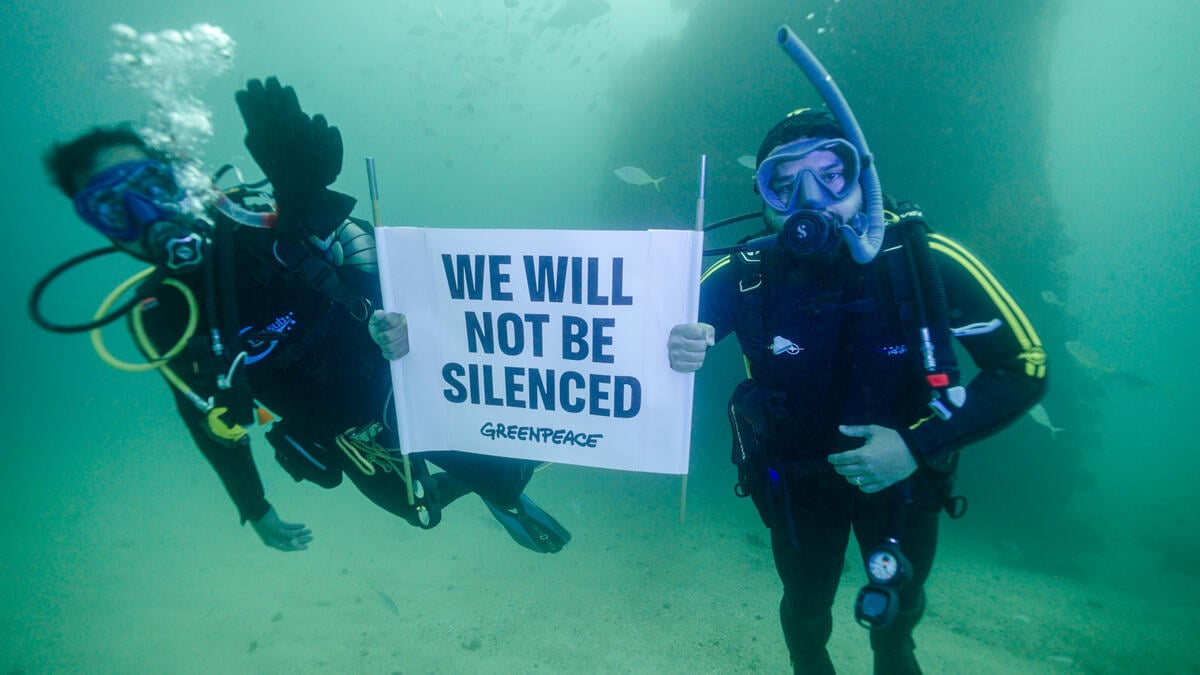
Around the world short term greed is placed over people and planet.
And the attacks on activism and civil society have only intensified.
The toll from the catastrophic impacts of climate change continues to rise as many of the mechanisms which previously protected environmental or humanitarian norms are being dismantled, or ignored.
In recent months environmental and human rights organisations like Greenpeace have been subjected to legal attacks intended to cripple our ability to work. These attacks are intended to reduce our basic human right to protest peacefully.
Bombs and bullets are joined by legal precedents, physical sabotage is now joined by attacks intended to bankrupt organisations but the end goal is still the same – stop those who hope for a better world from putting that hope into action.
This reality of "SLAPPs" – Strategic Lawsuits Against Public Participation are not about fairness – they are about intimidation, draining an organisation's resources, and if not destroying them outright, at least destroying their ability to campaign.
They are a cynical attempt to weaponise the legal system against legitimate advocacy – suppress dissent in the name of law and order.
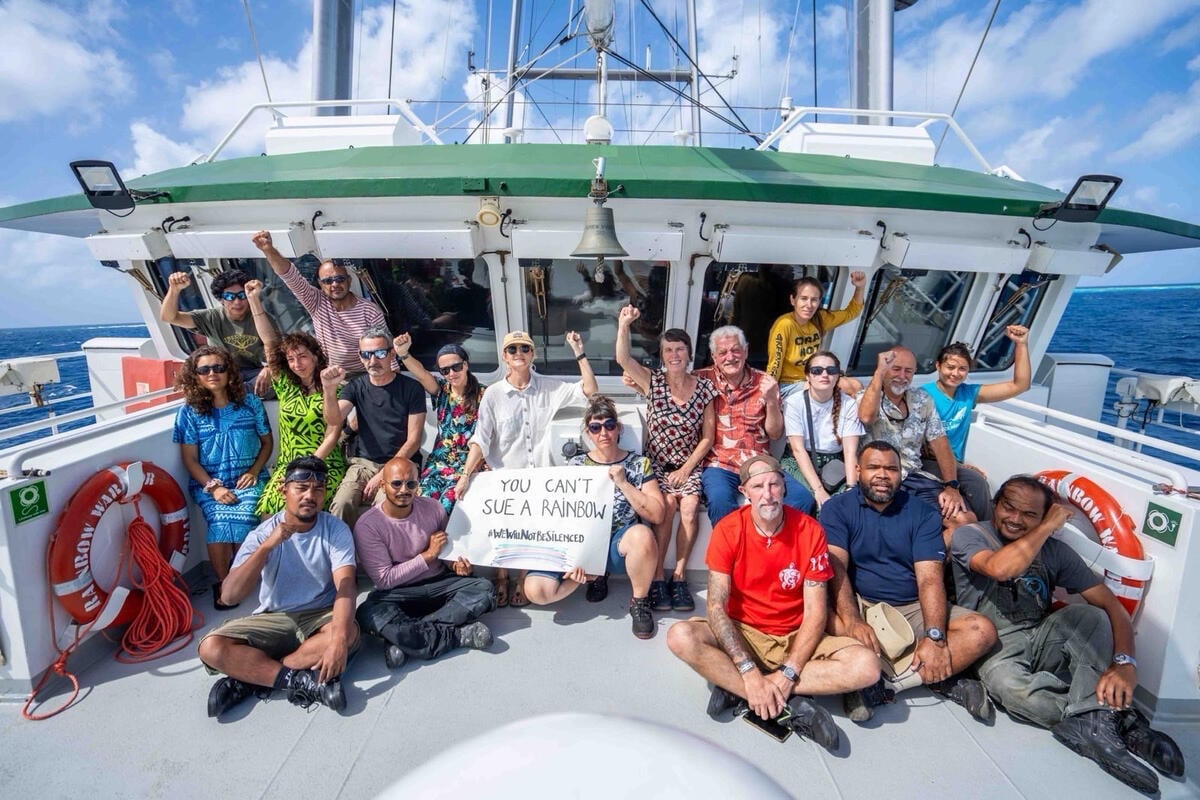
In this image, crew from the Rainbow Warrior joins the movement with a banner reading "You Can't Sue a Rainbow". © Greenpeace / Chewy C. Lin
The bombing of the Rainbow Warrior, and the death of Fernando Pereira, is a sobering reminder that there are forces in the world who will defend their selfish self-interests by any means necessary. They will stop at nothing.
But on the anniversary of the bombing we should remind ourselves that just as the French government couldn't sink a rainbow – they have never been able to silence hope.
They can't defeat the belief that not only can things change, but together we can change them for the better. They only win if we stop, we didn't, and we won't.
We should remind ourselves that after the attack on the Rainbow Warrior we continued to resist, continued to campaign, and eventually…
We won.
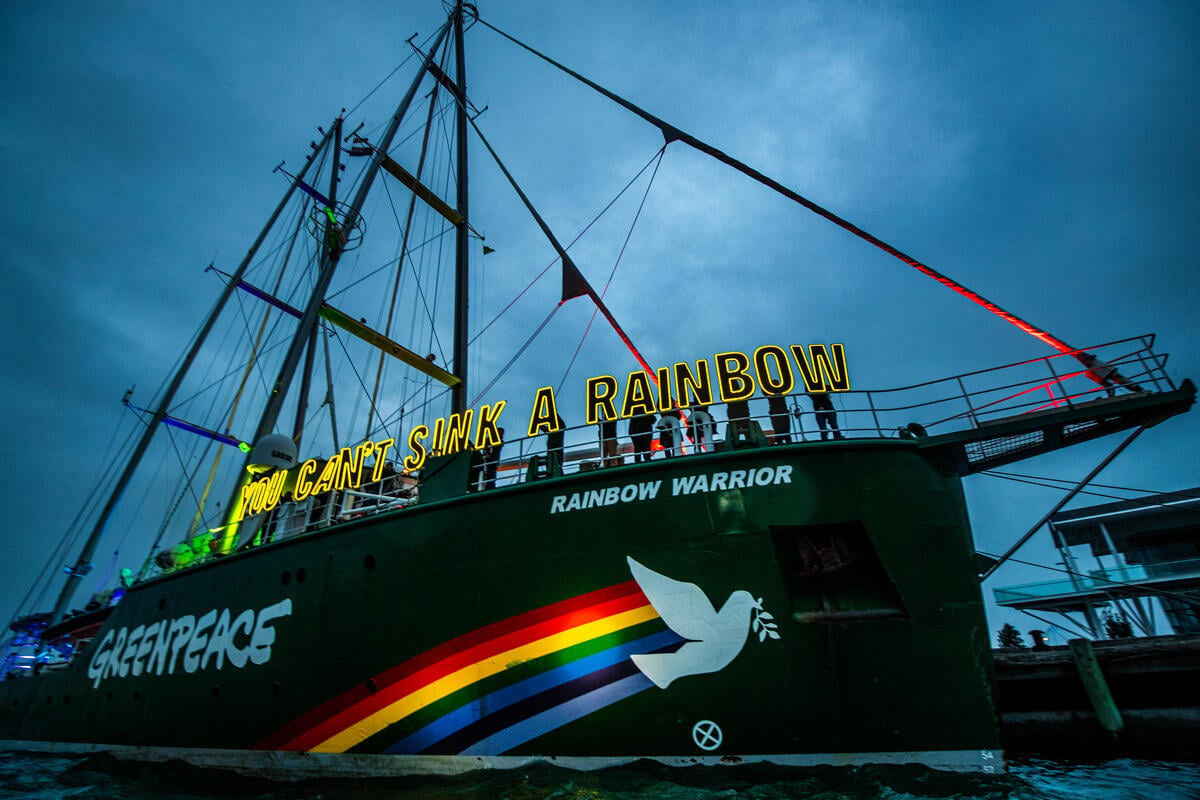
Mads Christensen is the Executive Director at Greenpeace International.






